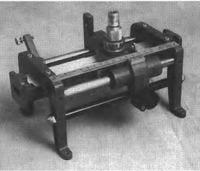venkateshkumar
Newbie level 6

how to measure vswr
HAI,
HOW TO MEASURE VSWR , FIRST WE ARE SETTING MAXIMUM AMPLITUDE IN CRO THEN WE PLUG COAXIAL CABLE TO THE VSWR METER? HOW TO FIND VSWR MEASUREMENT
ITS ANNA UNIVERSITY SYLLABUS FOR FINAL YR ECE STUDENTS CAN ANYONE EXPLAIN HOW TO set GAIN CONTROL NOB AND dB NOB , etc., and how to predict vswr.
thanking you
venkatesh
HAI,
HOW TO MEASURE VSWR , FIRST WE ARE SETTING MAXIMUM AMPLITUDE IN CRO THEN WE PLUG COAXIAL CABLE TO THE VSWR METER? HOW TO FIND VSWR MEASUREMENT
ITS ANNA UNIVERSITY SYLLABUS FOR FINAL YR ECE STUDENTS CAN ANYONE EXPLAIN HOW TO set GAIN CONTROL NOB AND dB NOB , etc., and how to predict vswr.
thanking you
venkatesh






